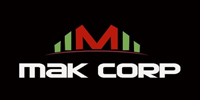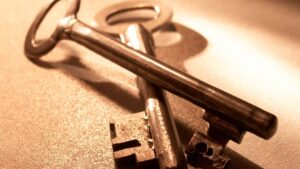There’s talk of a South American ‘lithium cartel’ – and it could give Aussie miners a leg up

Pic: Getty Images
A strategic move by Argentina and Bolivia to elevate their lithium status could have positive flow-on effects for Aussie miners with projects in the region.
But there is also the potential for a tax downfall.
Bolivia and Argentina, along with Chile, form what is known as the “lithium triangle”, and together account for over half of the world’s lithium supply.
The Bolivian and Argentinean governments are reportedly in talks to establish an agreement on lithium, giving rise to the idea of a “regional lithium cartel” not unlike what the large oil producing countries did with the formation of the Organisation of Petroleum Exporting Countries (OPEC).
And just as OPEC has managed to impact oil prices, a South American “lithium cartel” would have an impact on the price of lithium.
Niv Dagan, executive director at boutique investment firm Peak Asset Management, said Bolivia, Chile and Argentina, which currently make up over 54 per cent of the globe’s lithium supply and given their fragile economic states, are in a very strong position to collude on price and supply.
“Similar to some of the Middle Eastern countries like Iran, Iraq and the Saudis with crude oil, the ability for the ‘golden triangle’ to control price, depending on its direction, could have a positive flow-on effect on Australia’s lithium industry, as their operations are based in South America,” he told Stockhead.
“However, what remains unclear, is whether a foreign tax will be placed on non-domiciled operators such as GXY, GLN, BMG, LPI etc and whether this will have a negative bearing.”
- Subscribe to our daily newsletter
- Join our small cap Facebook group
- Follow us on Facebook or Twitter
There are 14 ASX-listed companies with projects in South America and 10 of those have projects in Argentina.
Here’s a list of small cap stocks with lithium projects in South America, courtesy of leading ASX data provider MakCorp
Scroll or swipe for full table
| ASX Code | Company | Project Location | Intra-day Price April 24 | Market Cap $ | 1-Year % Change | 1-Week % Change |
|---|---|---|---|---|---|---|
| LPI | LITHIUM POWER INTERNATIONAL | ARGENTINA & CHILE | 0.24 | 61,690,768 | -0.213115 | 0.090909 |
| LKE | LAKE RESOURCES | ARGENTINA | 0.051 | 19,804,666 | -0.547826 | 0.061225 |
| SEI | SPECIALITY METALS INTERNATIONAL | CHILE | 0.029 | 16,091,416 | 0.208333 | 0.035714 |
| BMG | BMG RESOURCES | CHILE | 0.009 | 5,019,592 | -0.5 | 0 |
| GPP | GREENPOWER ENERGY | GUYANA | 0.0025 | 3,913,426 | -0.791667 | 0 |
| PNN | PEPINNINI LITHIUM | ARGENTINA | 0.003 | 3,864,928 | -0.844444 | 0 |
| LRS | LATIN RESOURCES | ARGENTINA | 0.0015 | 5,008,130 | -0.875 | 0 |
| CAS | CRUSADER RESOURCES (Suspended since Sept 27, 2019) | BRAZIL | 0.02 | 23,300,000 | -0.59 | 0 |
| ENB | ENEABBA GAS (Suspended since Dec 6, 2018) | ARGENTINA | 0.004 | 4,200,000 | -0.55 | 0 |
| PM1 | PURE MINERALS | ARGENTINA | 0.014 | 4,401,307 | -0.222222 | -0.066667 |
| ORE | OROCOBRE | ARGENTINA | 3.25 | 881,855,104 | -0.369231 | -0.083799 |
| GLN | GALAN LITHIUM | ARGENTINA | 0.265 | 37,506,940 | 1.208333 | -0.145161 |
| GXY | GALAXY RESOURCES | ARGENTINA | 1.5475 | 666,301,760 | -0.465986 | -0.160428 |
| DHR | DARK HORSE RESOURCES | ARGENTINA | 0.005 | 11,856,520 | -0.75 | -0.285714 |
Lithium stocks haven’t performed that well over the past year largely due to fears of oversupply as a bunch of new mines came into production last year.
However, Galan Lithium (ASX:GLN) and Specialty Metals International (ASX:SEI) have rallied 121 per cent and 21 per cent, respectively, in the past 12 months.
A handful of stocks have also made some small gains over the past week, since news of the possible “lithium cartel” emerged.
Lithium Power International (ASX:LPI) is up 9 per cent, Lake Resources (ASX:LKE) is up 6 per cent and Specialty Metals International gained a further 4 per cent.
Benchmark Mineral Intelligence analyst Andrew Miller told Stockhead that with South American brine resources accounting for a large proportion of global reserves at a low-cost level, potential collaboration between the countries could allow for accelerated production expansions from the regions.
“There have been a number of governmental, regulatory and technical challenges which have limited output expansions from the region in recent years and allowed Australian spodumene to take a bigger share of the lithium feedstock market,” he explained.
Lithium is mined from two main sources — hard rock (hosted in spodumene ore) and brine (lithium-enriched salt water).
Spodumene is the main lithium bearing mineral mined from most hard rock lithium mines around the world.
Lithium from hard rock deposits, like those found in Australia, can be more expensive to extract initially but have an important advantage in electric vehicle markets.
That’s because the lithium-bearing spodumene ore can be turned into lithium hydroxide – which commands a higher price than carbonate — after a relatively simple process, and can produce cathode material more efficiently.
This gives Australia — now the world’s largest lithium producer — a cost advantage of 10 to 15 per cent compared to the largest South American brine producers, according to the Australian Department of Innovation, Industry and Science.
The good news for lithium explorers, regardless of where their project is located, is that the demand picture is still extremely strong and there will be a need for both brine and spodumene deposits.
“Ultimately, supply chains from brine and spodumene will have to increase over the coming years, particularly with the potential cost benefits of producing carbonate from brine and hydroxide from spodumene,” Miller said.
Stockhead is proud to use MakCorp as a provider of great value, accurate and reliable data on ASX-listed mining stocks. For more information head to MakCorp’s website.

This article does not constitute financial product advice. You should consider obtaining independent advice before making any financial decisions.
UNLOCK INSIGHTS
Discover the untold stories of emerging ASX stocks.
Daily news and expert analysis, it's free to subscribe.
By proceeding, you confirm you understand that we handle personal information in accordance with our Privacy Policy.








